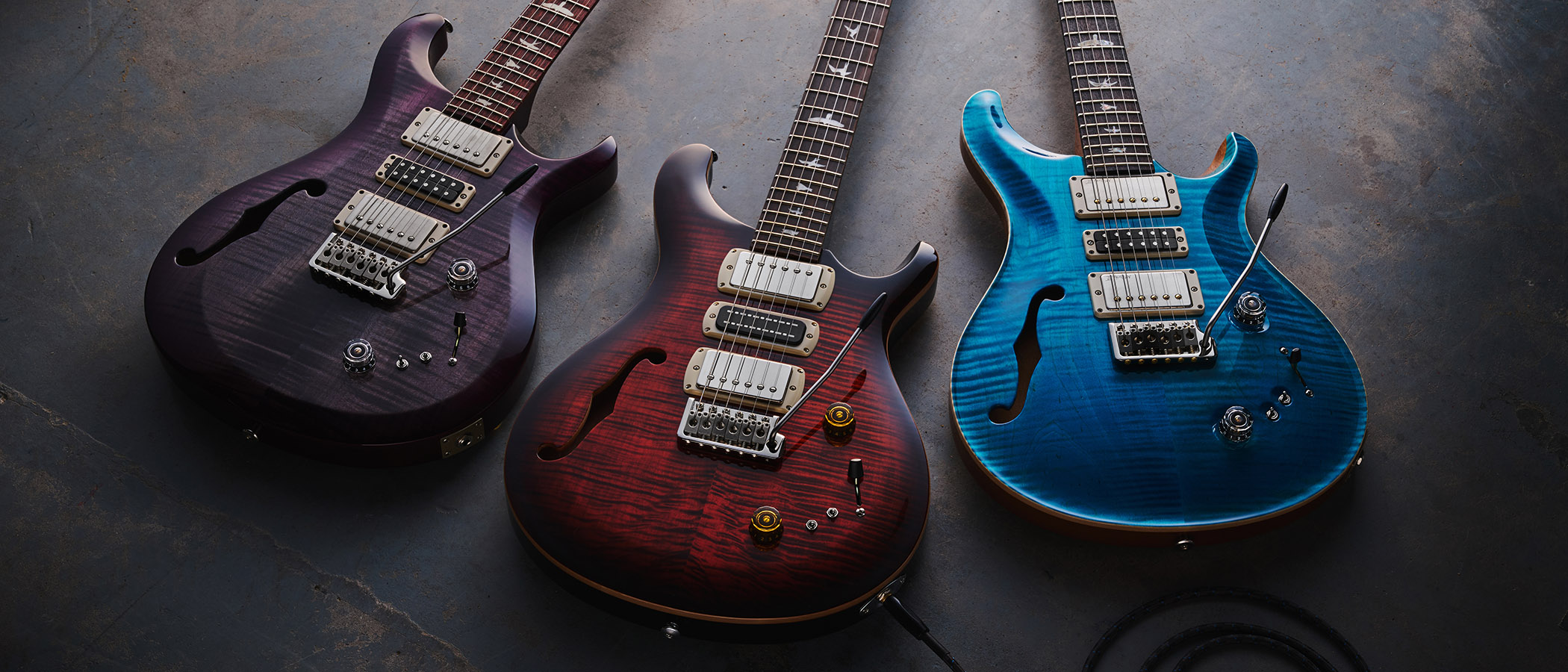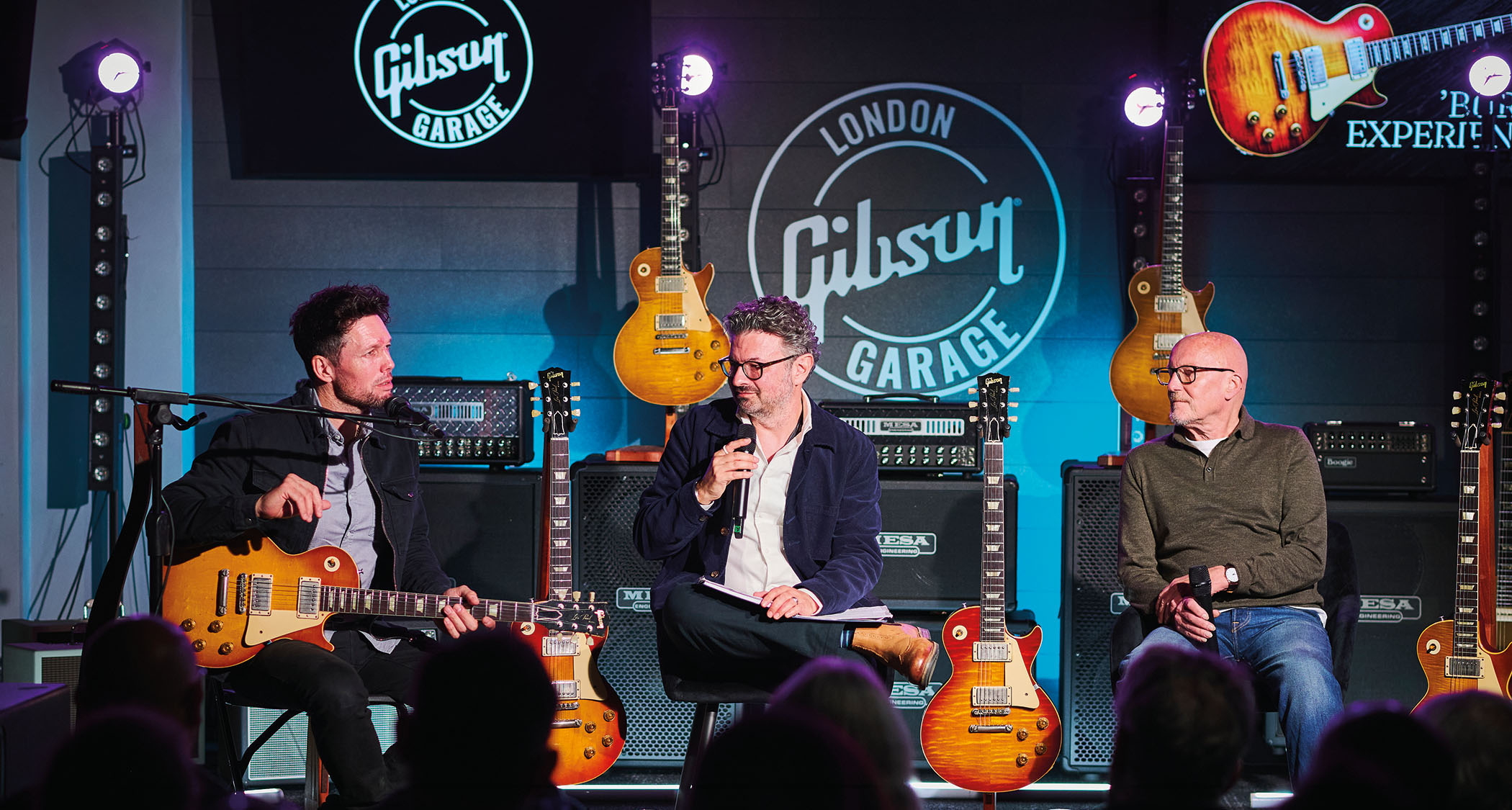Guitar World Verdict
These aren’t the only three-pickup models across the ranges, or the only Semi‑Hollows, but – for 40 years and counting – PRS is still providing a dizzying choice of multi-toned instruments. We doubt these will be the last!
Pros
- +
Core model is superb craft.
- +
+Light weight.
- +
Neck feel and playability.
- +
Expansive humbucker/single-coil tones.
- +
Tuning stability – faultless.
- +
S2 has USA pickups and equally expansive sounds – the player’s Special?
- +
SE has those expansive sounds and it is a lot of guitar for the money.
Cons
- -
Core version is a big investment.
- -
No solid color options for S2 and SE models.
- -
Non-locking tuners on the SE.
You can trust Guitar World
What is it?
Not too long back, the majority of new guitars and gear were launched around the USA NAMM Winter and Summer Shows.
Now it seems they’re coming thick and fast every month or so! We’ve already lost count of the new models PRS has released in this significant anniversary year, but its latest five-strong wave adds the original-style PRS HSS Studio to the S2 and SE lines (along with an SE bolt-on Studio Standard), while the S2 and SE electric guitar range also get a Special Semi-Hollow, which has been a USA Core model since 2021.
If you’re not au fait with these different PRS levels, the USA Core range is the top tier before you go into the exclusive Private Stock custom shop. The S2 models are also made in the USA, in the same factory alongside the Core models, but use a simplified production path and, up until recently, the same hardware and pickups as the start-up SE models.
These SEs are primarily made in Indonesia by Cor-Tek and are the entry-level models, starting currently with the bolt-on SE CE 24 Standard Satin at $499/£520.
So, with a three-pickup Special Semi-Hollow in all three ranges, a comparison was too good to miss – not least that, as you can see, our three guitars range from $/£1k to $/£5k. Good, better, best? Let’s find out…
Special Semi-Hollow
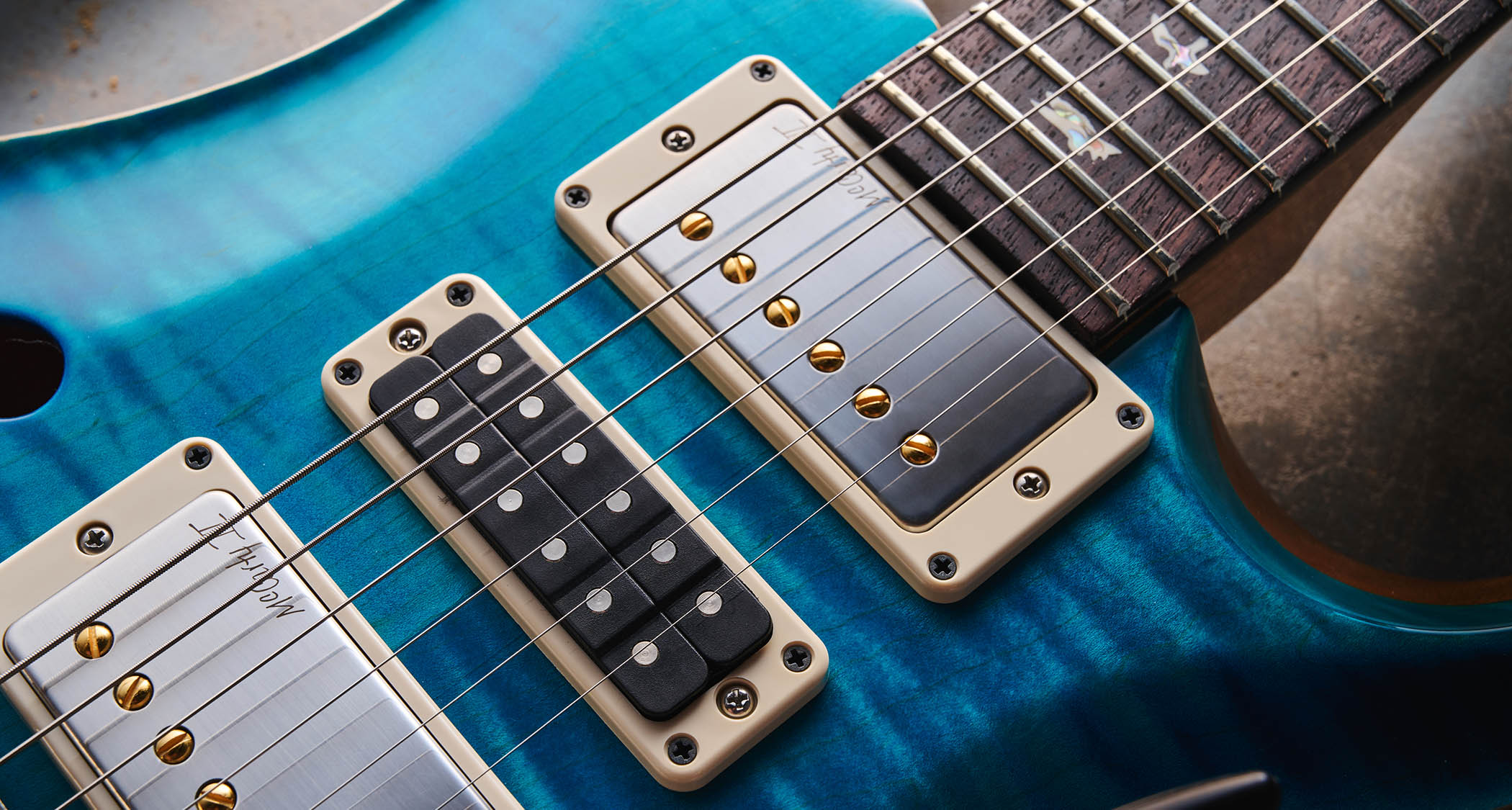
Although a PRS Special first appeared in 1987 (a twin-humbucking Standard with a vibrato up-rout and some natty colours) and ‘Special’ has been used over the years to denote three-pickup models such as the Swamp Ash Special, the Special Semi-Hollow has its roots in the Private Stock Super Eagle (2016) and Super Eagle II (2017) limited runs, a design created for John Mayer’s tours with Dead & Co.
These led to a simplified limited-edition version between 2018 and ’19 and a full production version that joined the Core line in 2021.
All the latest guitar news, interviews, lessons, reviews, deals and more, direct to your inbox!
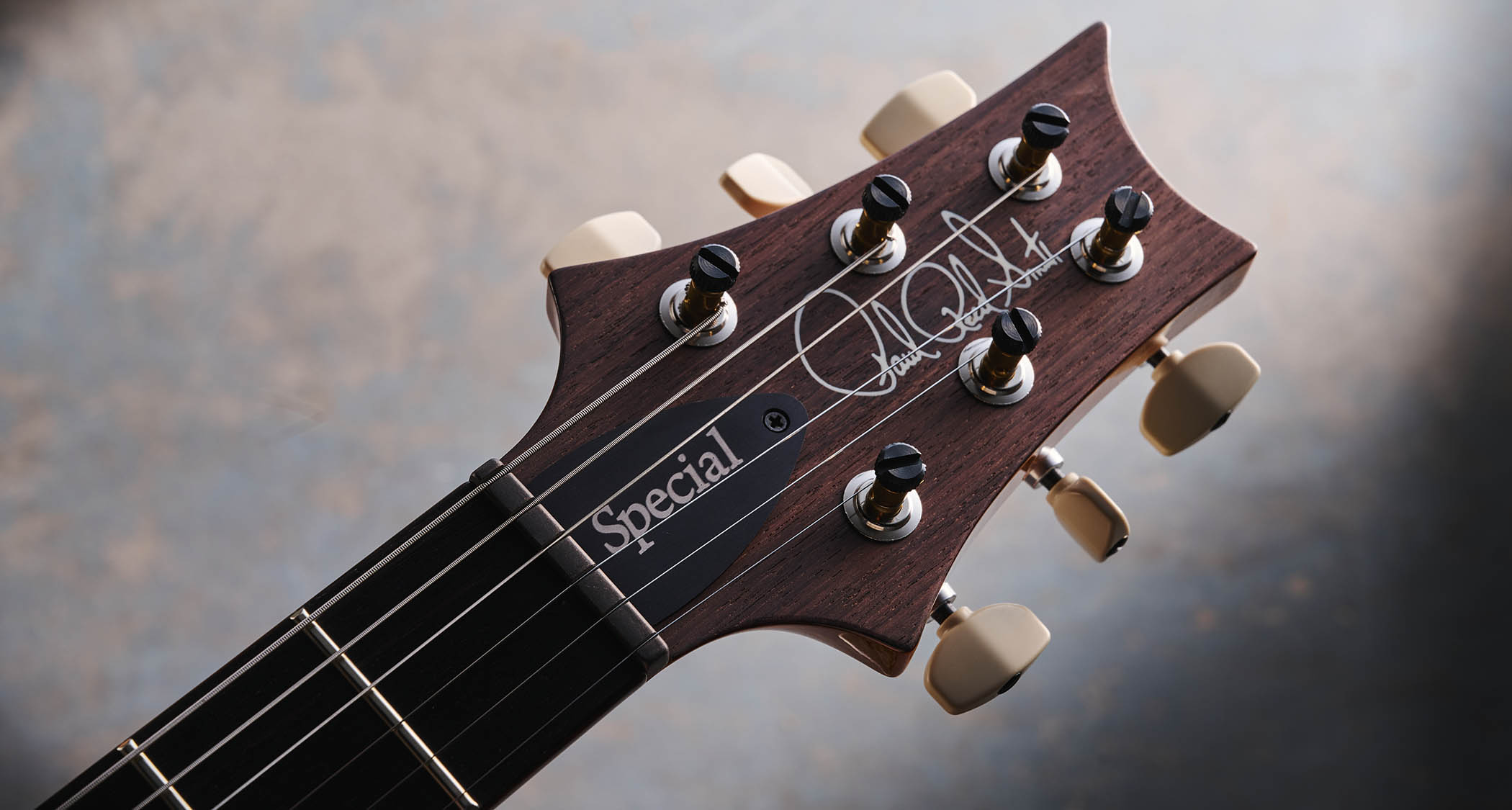
As befits its price tag, pulling this from its smart moulded case, not only is the guitar light in weight, it’s just a beautiful example of why we’re still writing about PRS after all these years. While all our trio use the same original PRS scale length and 22 frets, really, that’s about all each of the models has in common.
Perhaps surprisingly bearing in mind its Semi-Hollow status, the body is the original depth (49mm overall), not the deeper McCarty spec. The back is one piece and seems mainly hollowed out on the bass side and behind the vibrato, while the figured maple top is machined away under the f-hole area and has the classic ‘violin’ top carve with indents for the volume and tone. There’s very little radius to the top edge, the back edge is more rounded, and we also get a light ribcage cut-out, of course.
Each of our models uses a different 22-fret glued-in neck construction. Here, the Core neck is one-piece, quarter-sawn mahogany, with its unbound dark rosewood fingerboard and the fanciest bird inlays with vintage ivory acrylic outlines and green abalone centres. Each neck profile is different, too; the Core model here has the Pattern profile.
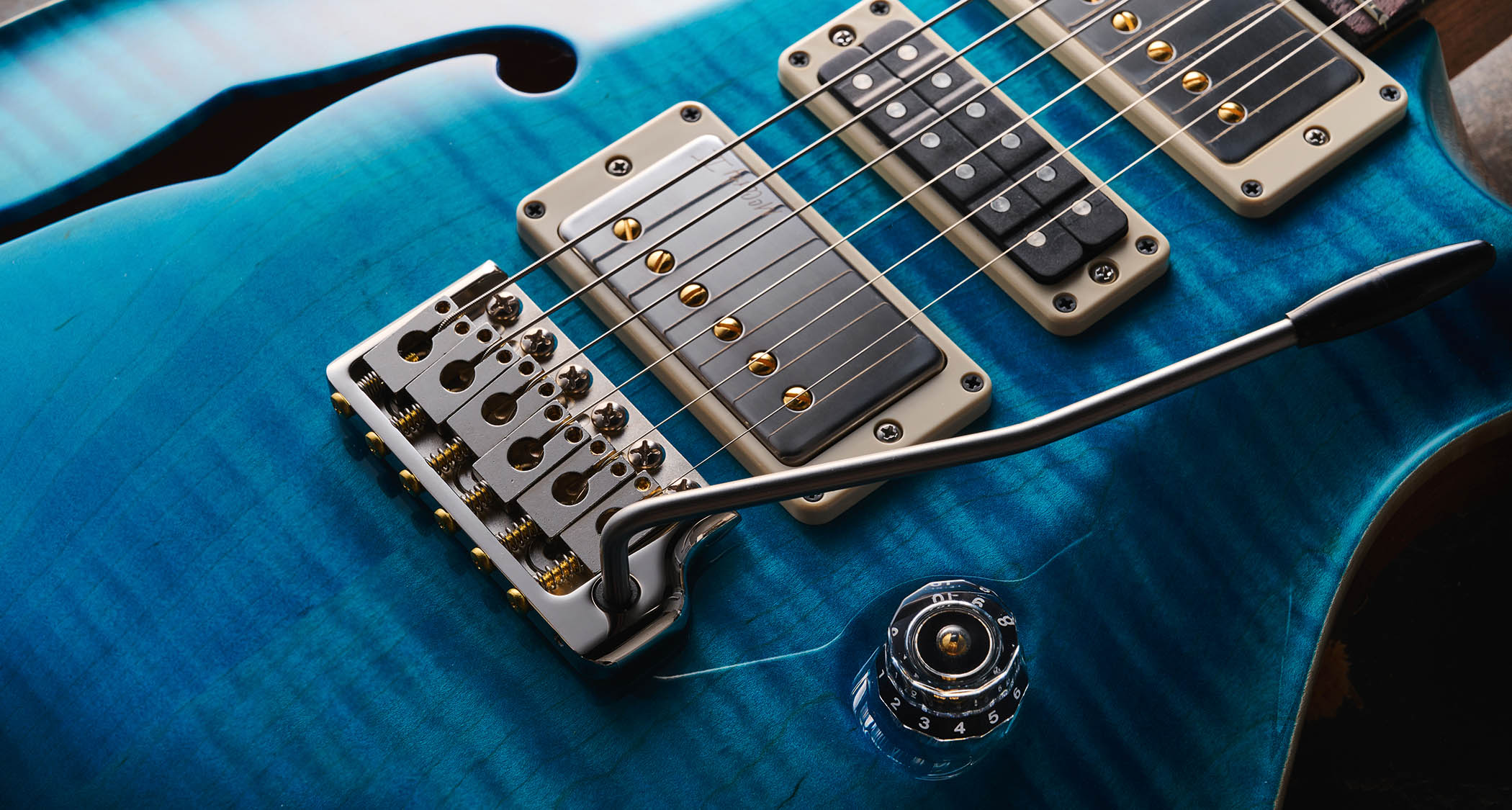
While the Gen III vibrato has been in place for some time, the locking Phase III tuners were upgraded last year with the wing buttons, and virtually every visible part is proprietarily designed. It might not be a cheap date, but the design, craft and execution remain faultless.
Typical of the ever-evolving specification, for this year the Special features the new McCarty III humbuckers (the neck is reversed so the screw poles face the bridge), which are also now standard on the other McCarty models and in the bridge position of the Studio. Visually quite different, but still a humbucker, is the Narrowfield in the middle position with its flush slug poles and a downsized mounting ring.
Control-wise, all three of our models share more similarity and here the five-way pickup selector voices bridge, bridge and middle, bridge and neck, middle and neck, and neck pickup only, while those ‘coil-tap’ switches move between full humbucker and single coil (voicing the slug coil, hence the reason for reversing the neck pickup so that coil sits closest to the neck).
S2 Special Semi-Hollow

The mid-tier Special arrives in a pretty rugged ‘premium’ gigbag, as opposed to that new moulded case of the Core model, and from the off comes across as a little less posh. Through the translucent colour you can easily see that the back remains one piece, but here we have a mainly flat top with the edge chambering – or, in PRS-speak, ‘asymmetric bevel’.
Overall depth is 45mm, the rim depth slightly more than the Core model at 38mm. There are no indents for the controls, and while we have a similar rear ribcage cut, the back coverplates aren’t recessed like the Core’s.
The gloss nitro finish goes over the headstock face, and like the Core model there’s no rosewood veneer facing. Here, the rosewood fingerboard has a decidedly reddish hue, quite different from the almost black fingerboard of the Core model.
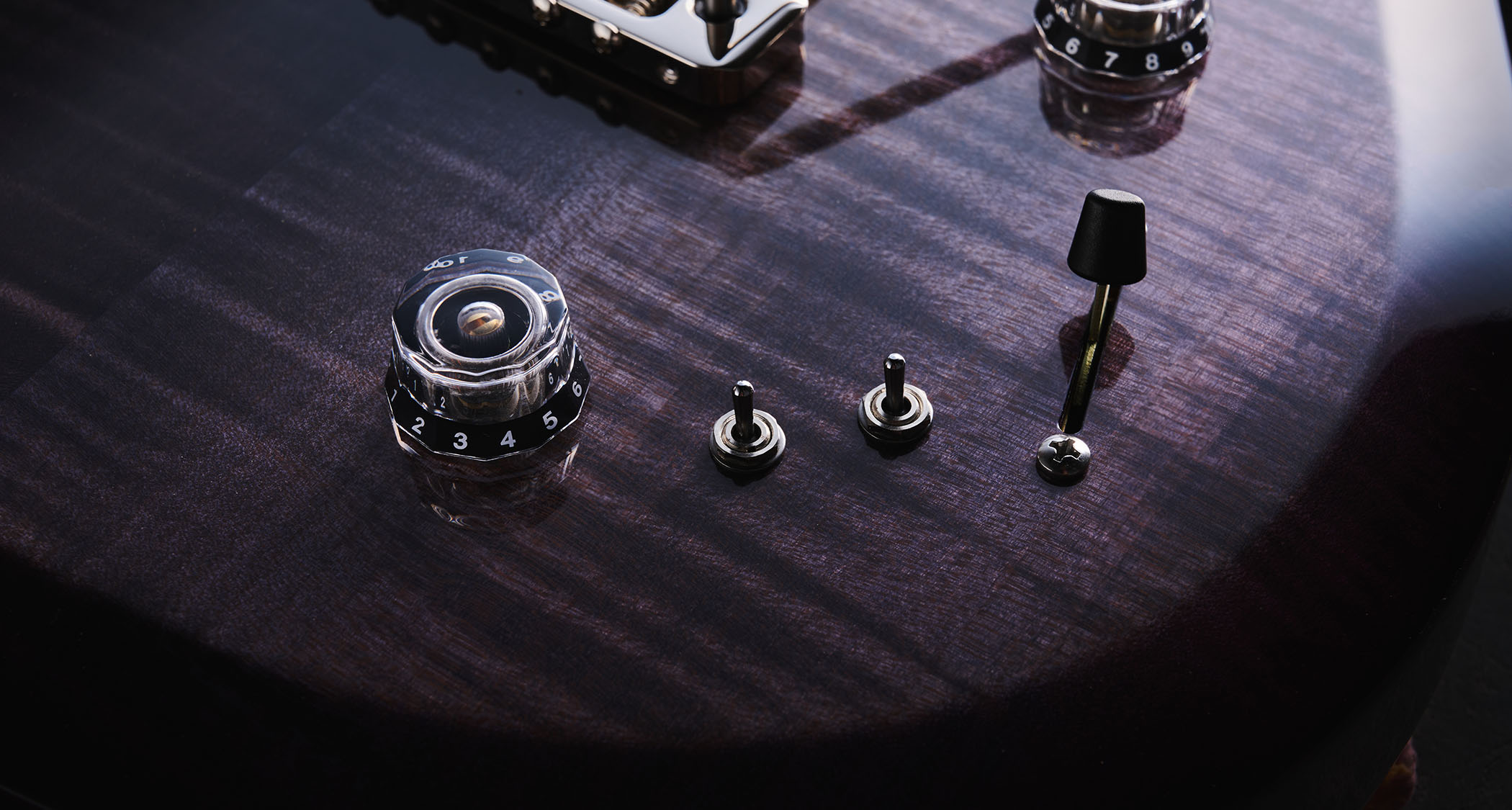
The birds are solid (vintage ivory acrylic) and more utilitarian looking, and the signature headstock logo is a raised gold-coloured motif; the Core’s signature is inlaid. Cosmetics aside, the headstock is spliced here, plus there’s a heel stack, but through the dark translucent body and neck back you can barely see those details. The Pattern Regular profile is different, too.
The tuners, however, are now the same as the Core model. The cast vibrato is the same as used on the USA bolt-on guitars and the SEs; it’s all-steel and a very fit-for-purpose piece.
We get the same USA Narrowfield in the middle position, while the brushed nickel-covered humbuckers here are the 58/15 LT units – one of our favourite vintage-inspired PRS designs. Again, that neck pickup is reversed, and the control selections are the same as on the Core model.
SE Special Semi-Hollow

Shaving $/£1.7k off the price of the S2 guitar, the SE looks far from cheap, a real testament to the increasing quality and clever specification of the SE models.
That impression is enhanced by the proprietary pickup rings here (like those used with the smaller 408/TCI-style pickup on the Core Custom 24-08, for example) and the amber lampshade knobs, even though the rugby ball-shaped output jack and the non-locking tuners look more generic.
The top is a figured maple veneer over a solid maple cap, and compared to the USA models, the figuring – while striking and attractive – doesn’t move in the light. The high-gloss finish is faultless, as is the natural edge ‘binding’, and while the inside edges of the f-hole look less neat, it’s far from shoddy.
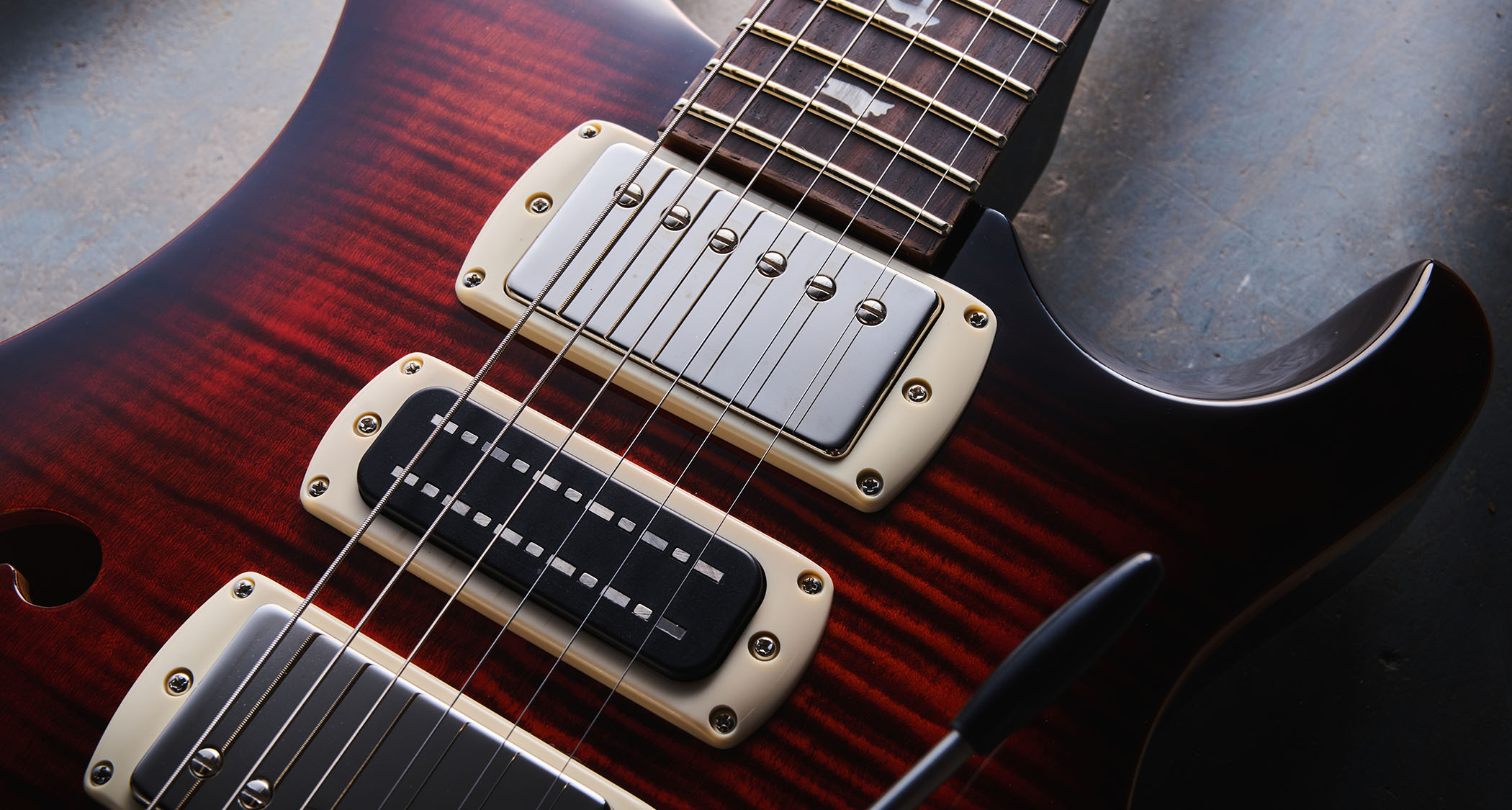
It’s marginally heavier than the USA models, with an overall depth of just over 45mm. It’s taller at the rim because the maple top is primarily flat with just a little fall away at the edges: this ‘shallow violin’ carve is aptly named, much less dished than the Core model and less stylised than the chamfering to the S2. That’s observation not criticism. Some might simply prefer the SE’s style.
The Wide-Thin profile neck here swaps to maple, though you can’t see that or the body back under the opaque deep brown finish. PRS calls it a ‘multi-ply’ construction, which we understand means a three-piece longitudinal laminate.
Another difference is that the rosewood fingerboard is actually bound with a thin strip of matching rosewood, the fret tangs are hidden (unlike the USA models), while the fret ends sit over the binding. It’s very neatly done, although the fingerboard edges don’t quite have the same in-curve as the USA guitars or as much rolling to the top edge.
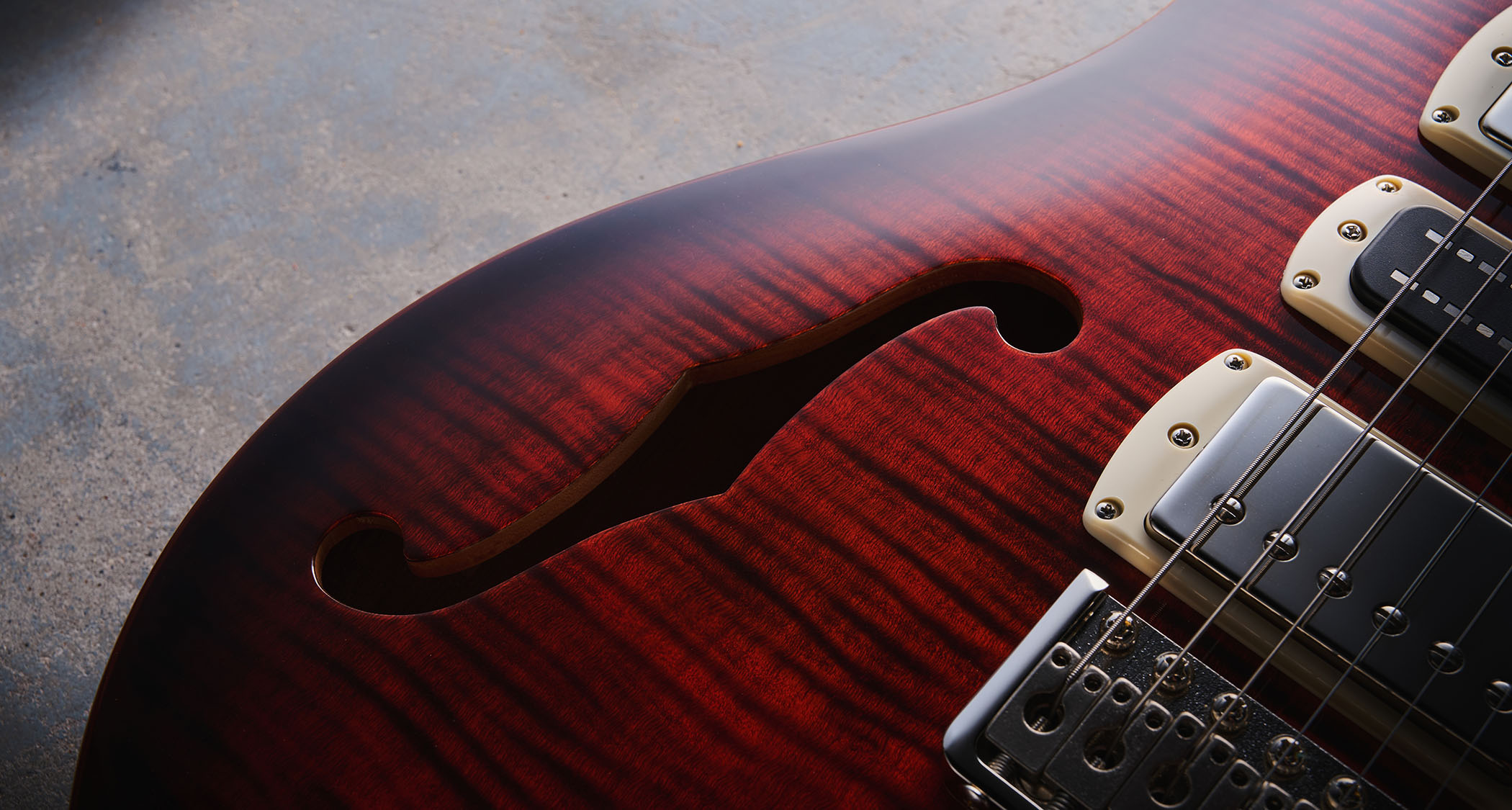
Another primary difference is that the SE uses PRS-designed, made-in-Indonesia ‘S’ pickups. At the bridge and neck are these versions of the 58/15 LTs, and the middle pickup is the humbucking Narrowfield DD (‘Deep Dish’) ‘S’. This ‘S’ version of the pickup was developed for the USA NF 53 and was first used on the three-pickup NF3 released last year.
It also features in the middle and neck positions on the brand-new SE Studio, Studio Standard and SE NF 53. Another minor point is that the neck pickup here isn’t reversed, so, when split, the voiced slug coil faces the bridge, not the neck as it does on the USA models.
Specs
Special Semi-Hollow
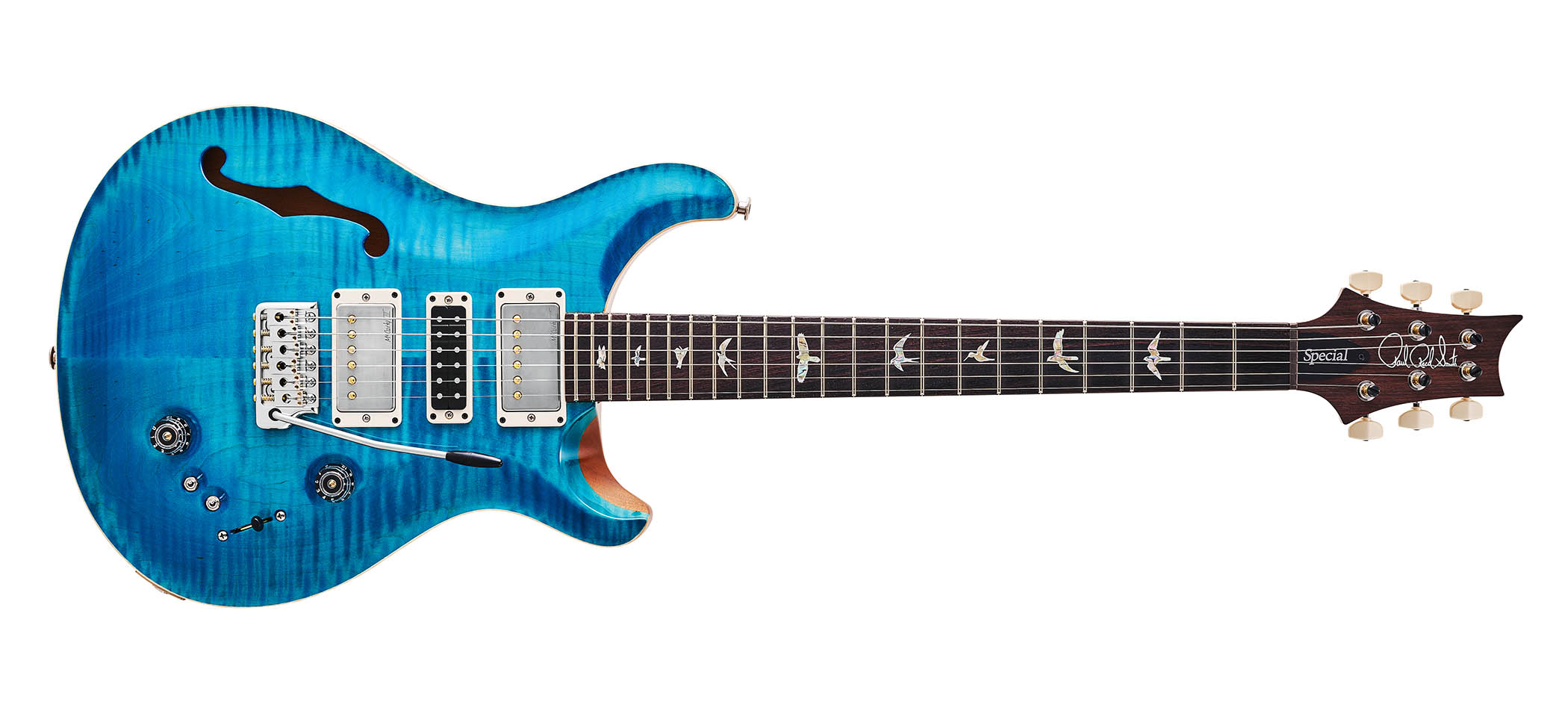
- PRICE: $5,060 / £5,169 (inc case)
- ORIGIN: USA
- TYPE: Double-cut semi-hollow
- BODY: 1-piece mahogany back w/ ‘violin’ carve figured maple top w/ f-hole
- NECK: 1-piece mahogany, Pattern profile, glued-in
- SCALE LENGTH: 635mm (25”)
- NUT/WIDTH: Friction reducing/ 43.8mm
- FINGERBOARD: Rosewood, outline bird inlays, 254mm (10”) radius
- FRETS: 22, medium
- HARDWARE: PRS patented vibrato Gen III, PRS Phase III locking tuners with wing ‘buttons’ – nickel-plated
- STRING SPACING, BRIDGE: 52.5mm
- ELECTRICS: PRS McCarty III Treble and Bass covered humbuckers, Narrowfield humbucker (middle), 5-way lever pickup selector switch, master volume and tone w/ 2x mini-toggle ‘coil-tap’ switches
- WEIGHT (kg/lb): 3.1/6.75
- LEFT-HANDERS: No
- FINISHES: Carroll Blue (as reviewed) from 14 solid and translucent colours – high‑gloss nitro
S2 Special Semi-Hollow
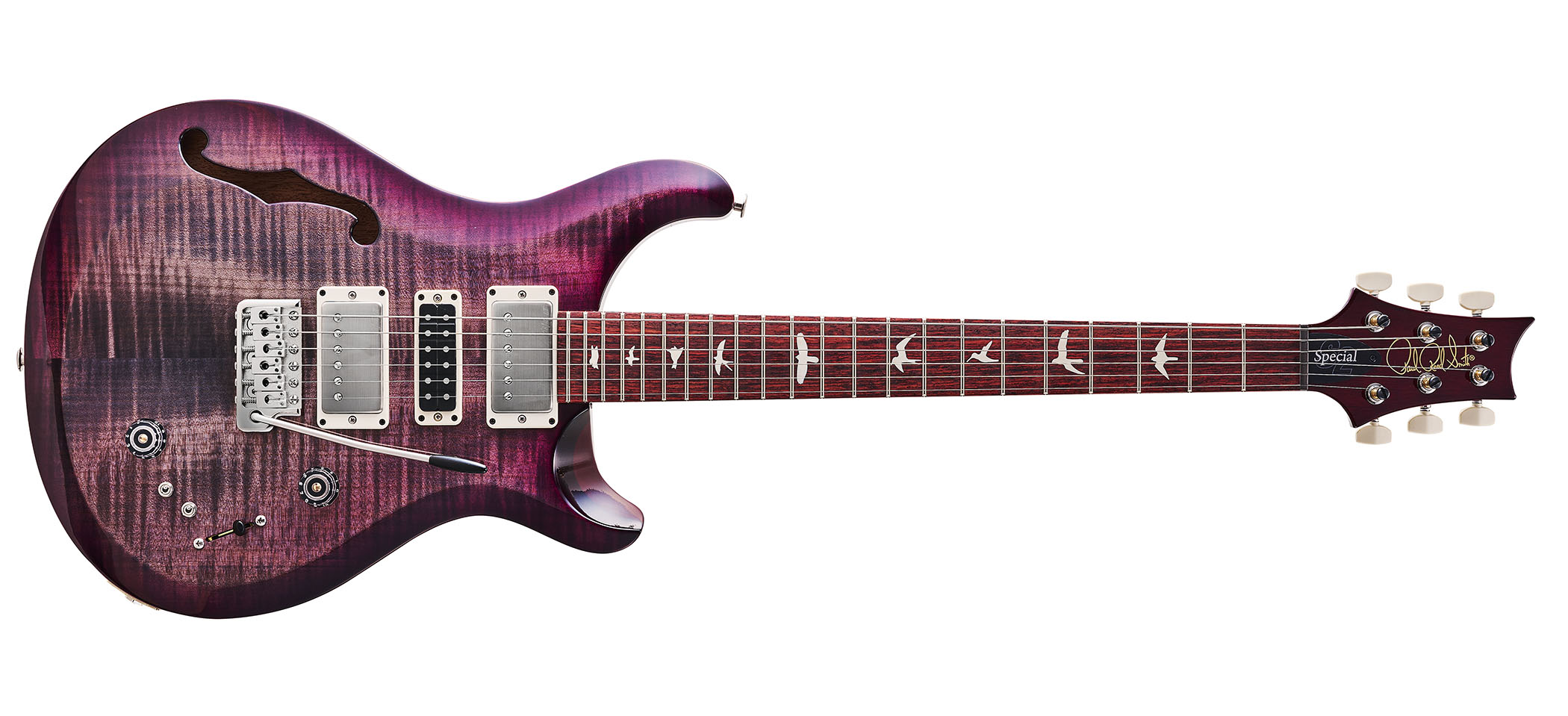
- PRICE: $2,599/£2,899 (inc gigbag)
- ORIGIN: USA
- TYPE: Double-cut semi-hollow
- BODY: 1-piece mahogany back w/ ‘asymmetric bevel’ carve figured maple top w/ f-hole
- NECK: 3-piece mahogany (scarf construction), Pattern Regular profile, glued-in
- SCALE LENGTH: 635mm (25”)
- NUT/WIDTH: Friction reducing/ 42.6mm
- FINGERBOARD: Rosewood, acrylic ‘old-school’ bird inlays, 254mm (10”) radius
- FRETS: 22, medium
- HARDWARE: PRS patented vibrato (cast), PRS Phase III locking tuners with wing ‘buttons’ – nickel-plated
- STRING SPACING, BRIDGE: 52.5mm
- ELECTRICS: PRS 58/15 Treble and Bass covered humbuckers, Narrowfield humbucker (middle), 5-way lever pickup selector switch, master volume and tone w/ 2x mini-toggle ‘coil-tap’ switches
- WEIGHT (kg/lb): 3.21/7.1
- OPTIONS: Colour only
- RANGE OPTIONS: There’s only one other 3-pickup S2, the new Studio w/ 58/15 LT at the bridge and 2x Narrowfields (£2,749)
- LEFT-HANDERS: No
- FINISHES: Faded Gray Black Purple Burst (as reviewed) from 6 translucent colours – high‑gloss nitro
SE Special Semi-Hollow
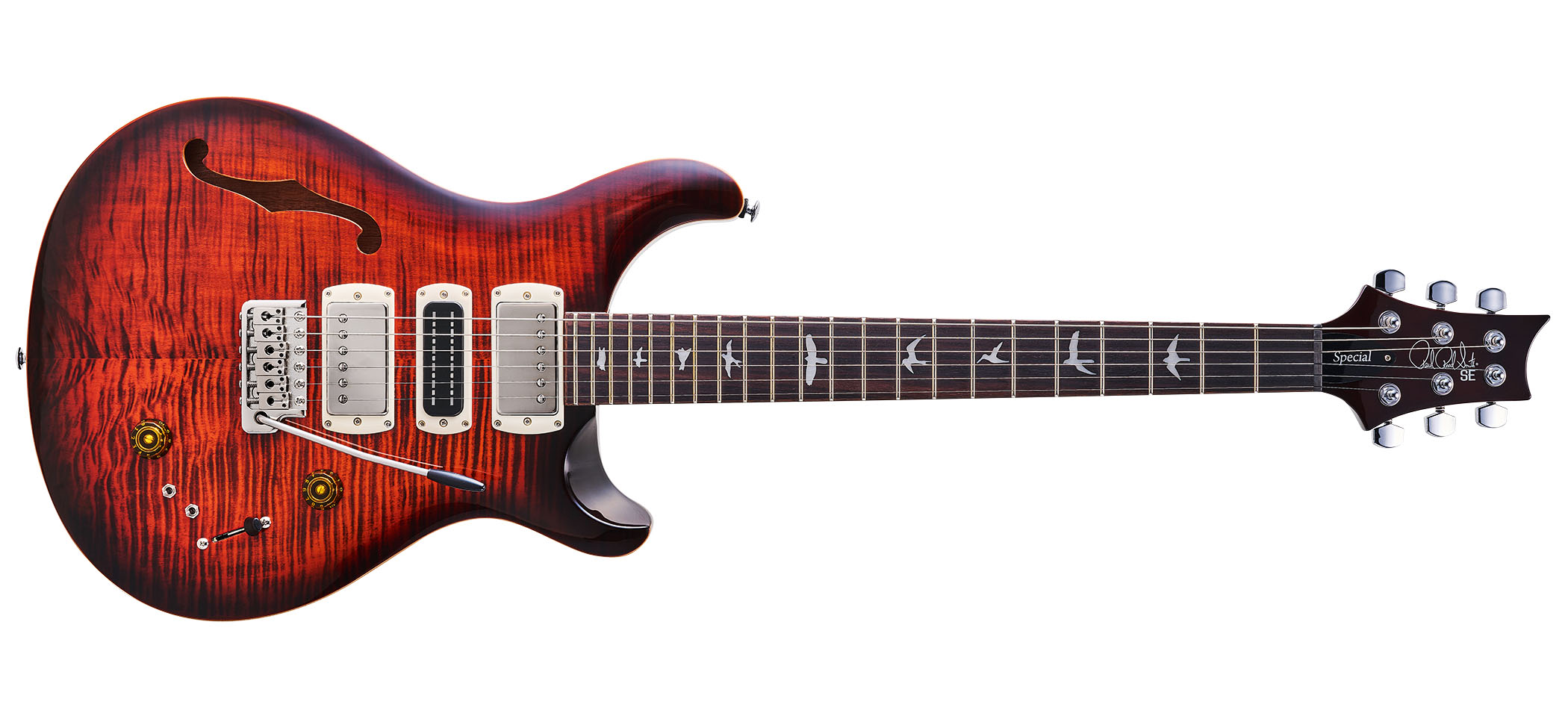
- PRICE: $1,149/£1,180 (inc gigbag)
- ORIGIN: Indonesia
- TYPE: Double-cut semi-hollow
- BODY: Mahogany back w/ ‘shallow violin’ carve maple top, figured maple veneer w/ f-hole
- NECK: Maple, Wide-Thin profile, glued-in
- SCALE LENGTH: 635mm (25”)
- NUT/WIDTH: Friction reducing/ 42.9mm
- FINGERBOARD: Rosewood, pearloid ‘old-school’ bird inlays, 254mm (10”) radius
- FRETS: 22, medium
- HARDWARE: PRS patented vibrato (cast), PRS designed non-locking tuners – nickel-plated
- STRING SPACING, BRIDGE: 52.5mm
- ELECTRICS: PRS 58/15 ‘S’ Treble and Bass covered humbuckers, Narrowfield DD ‘S’ humbucker (middle), 5-way lever pickup selector switch, master volume and tone w/ 2x mini-toggle ‘coil-tap’ switches
- WEIGHT (kg/lb): 3.4/7.48
- OPTIONS: Colour only
- RANGE OPTIONS: Other 3-pickup SE models: bolt-on NF 3 (£1,039), Swamp Ash Special (£1,020), Silver Sky (£1,039) and Studio Standard (£999); SE Studio set-neck (£1,125)
- LEFT-HANDERS: No
- FINISHES: Orange Tiger Smokeburst (as reviewed), Lake Blue, Charcoal Burst – high‑gloss polyester/acrylic
- CONTACT: PRS Guitars
Feel and sounds
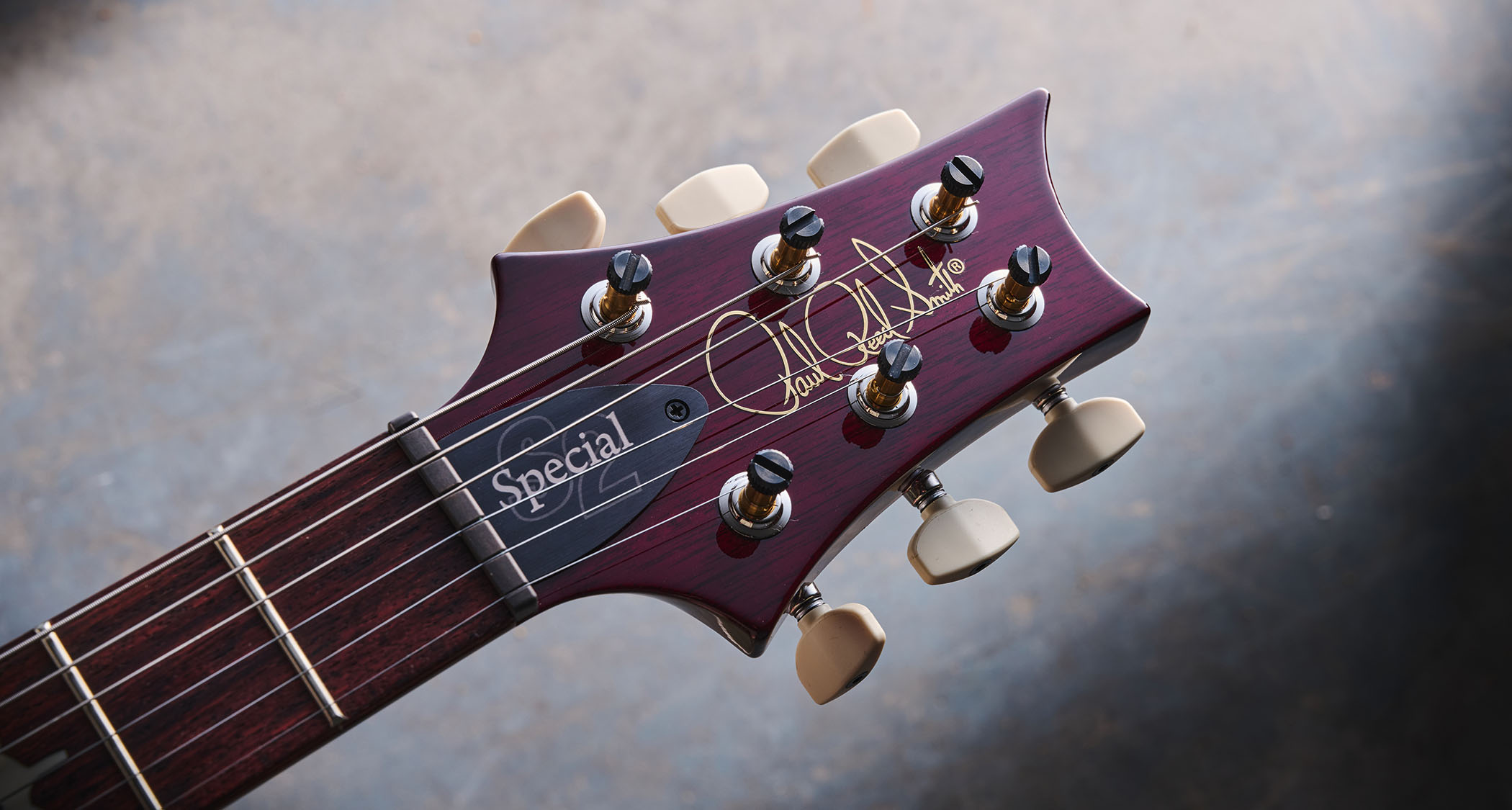
By the nature of the partially hollow design, all of our trio sit under 3.5kg (7.5lb) in weight; the Core model is the lightest and feels almost delicate. Despite the three different neck profiles, there’s a lot of similarity here and, dimensionally, they’re pretty close, too.
The Core’s Pattern profile is definitive PRS and based on the previous Wide-Fat. Although dimensionally the deepest, it also has that hint of a V that tapers the shoulders and reduces the apparent bulk in your hand.
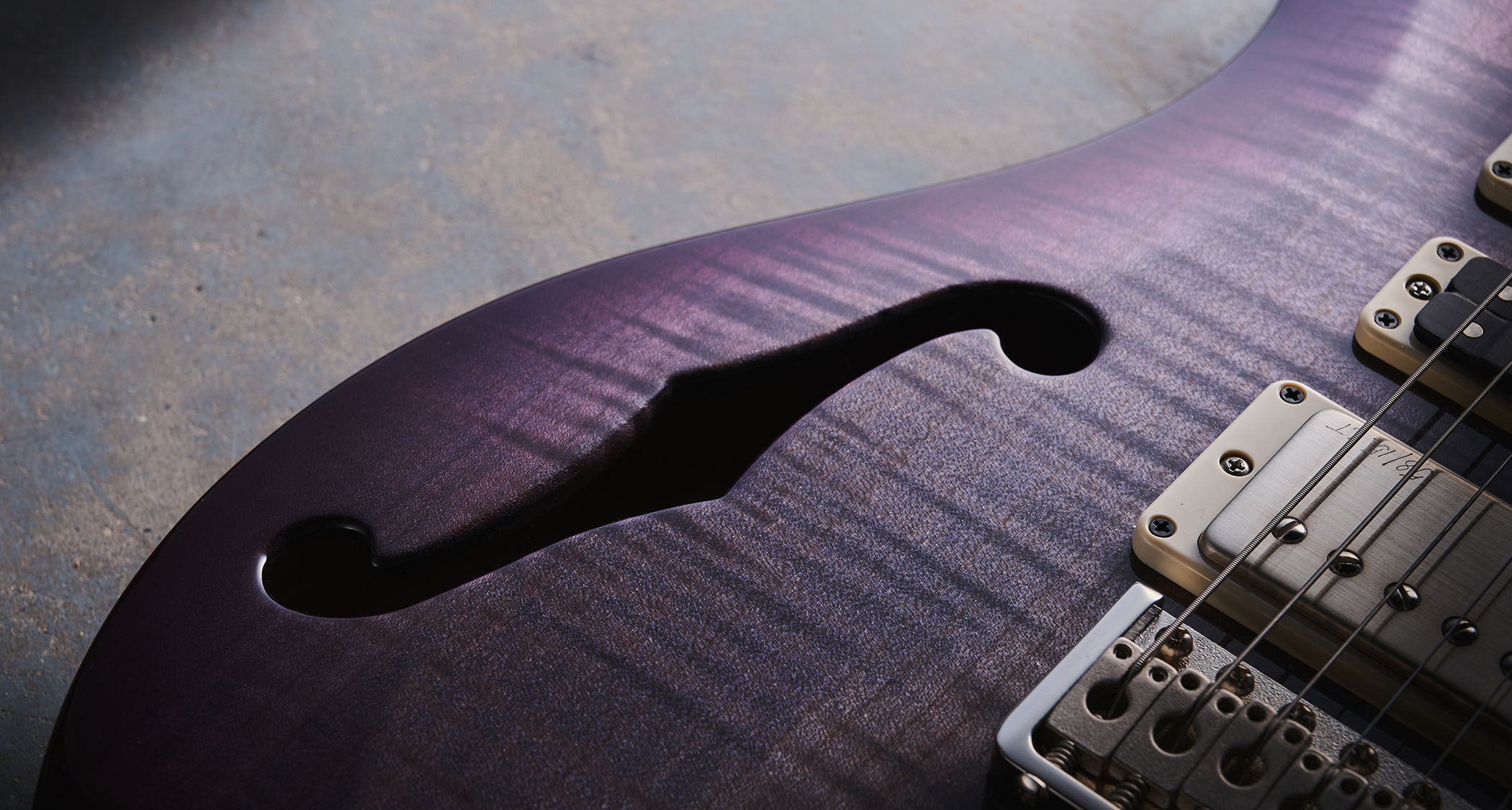
The S2’s Pattern Regular is marginally narrower in width and feels slightly more rounded, while front-to-back it’s slightly thinner in depth. The SE’s Wide-Thin actually feels a little bigger as it’s quite full shouldered – as we’ve said in recent reviews, it does feel a bit bigger in the hand than the older Wide-Thin.
Don’t forget we have the same scale length and fingerboard radius on all three, the same frets on the USA models (which are marginally wider and lower on the SE), the bridge string spacing is the same on all three, and both USA guitars have the same string spacing at the nut, the SE just a millimetre wider from E to E string. Close cousins? Yes.
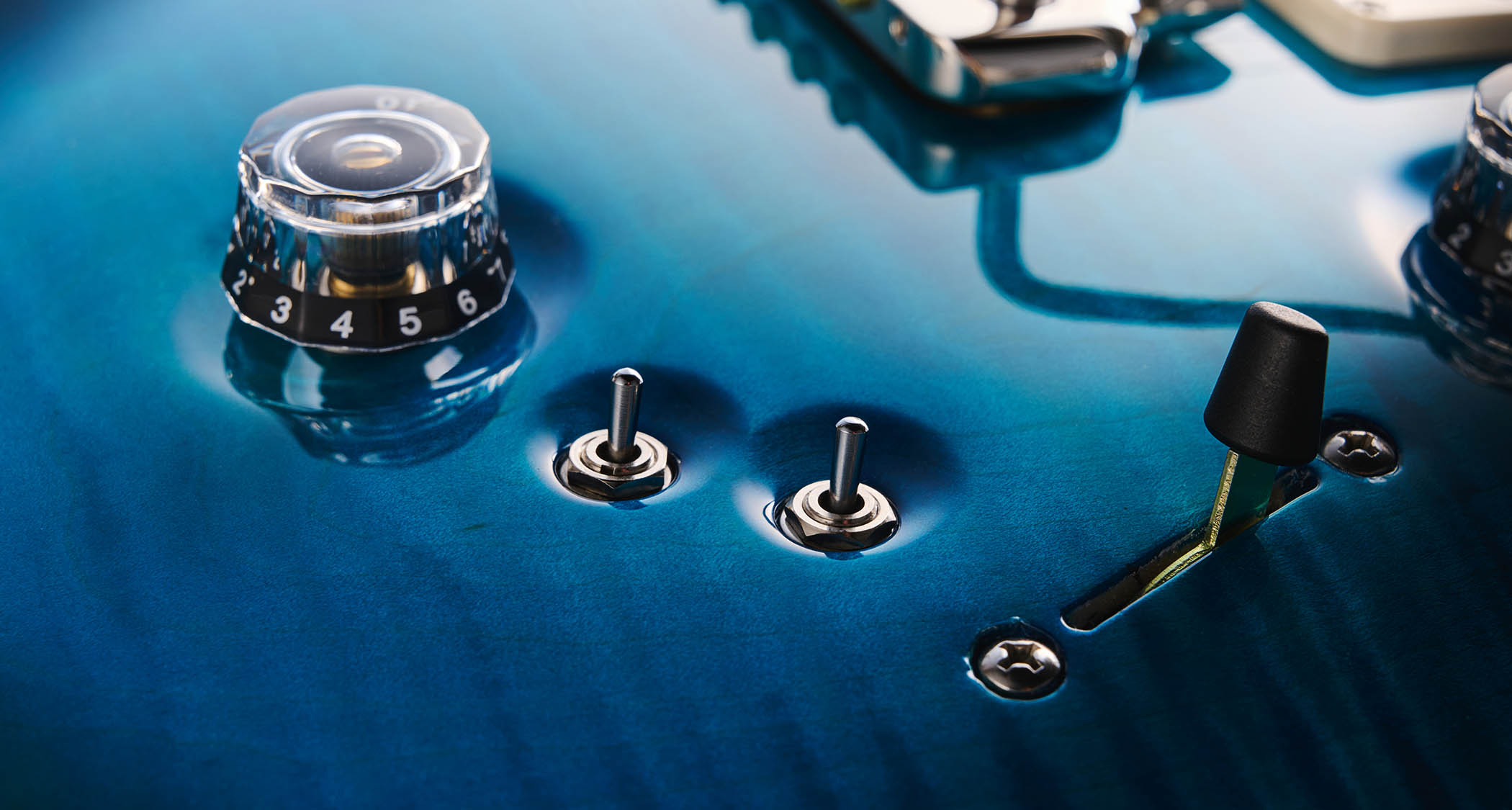
Unplugged, the Core model exhibits typical balance and depth without a particularly ‘hollow’ character. The S2 is very similar, perhaps with a little more push and attack, while the SE actually sits closer to the Core model with very marginally less clarity.
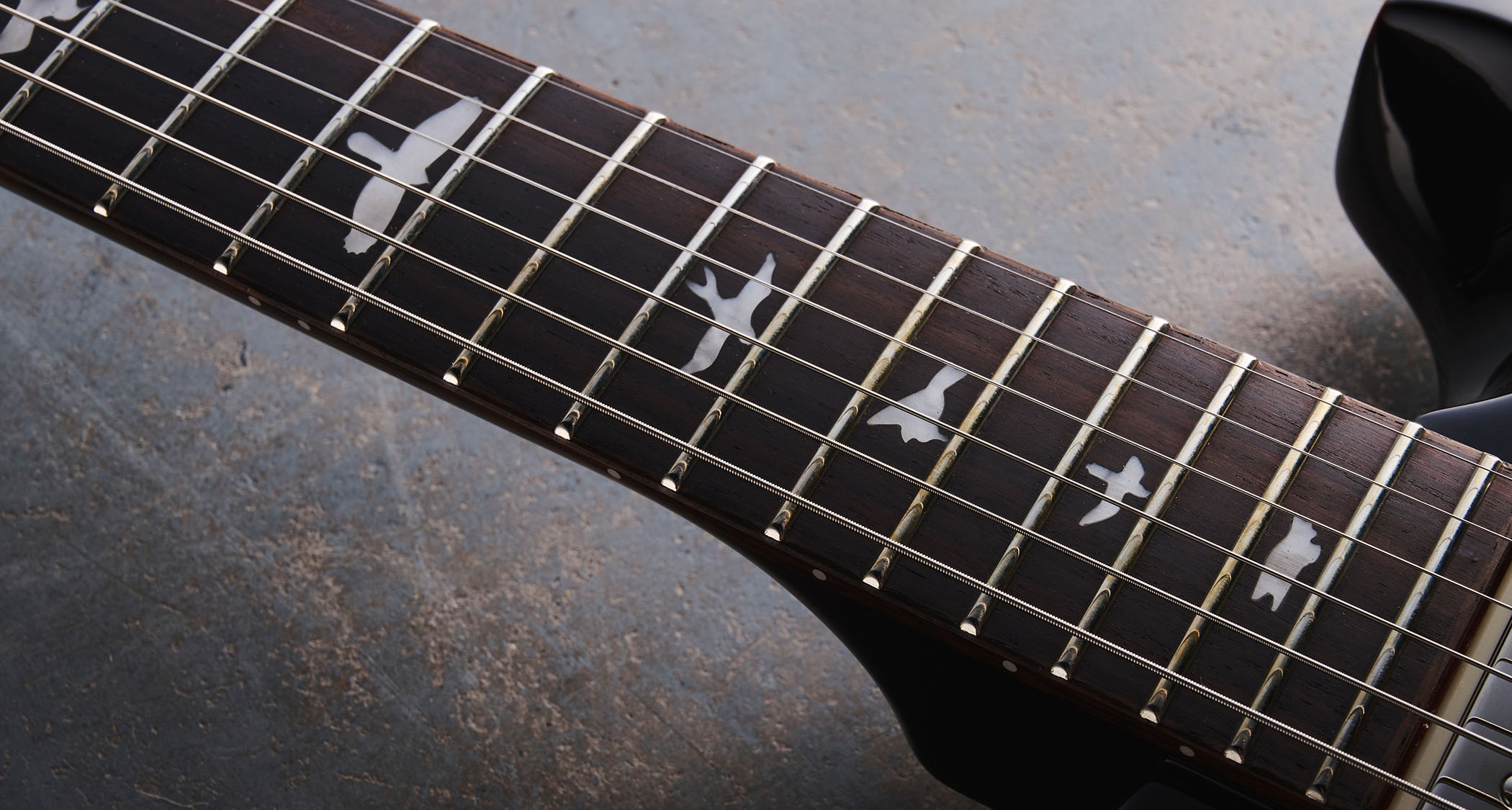
But plugged in, the Core Special is just one of those guitars you get lost in. If there’s a bad sound here, we didn’t find it. The McCarty IIIs, in combination with the build, pull back the mid-focus of PRS guitars of old and, played clean, the bridge has a well-behaved honk that sounds, to our ears, like a well-behaved Patent Applied For as you up the gain.
The neck is very well matched in output: perfectly plummy with the volume full up, and nice and snappy with it rolled back. Here, too, the dual-pickup mix in the centre position of the five-way has clarity and edge that nods towards a classic Gibson thinline when played cleaner.
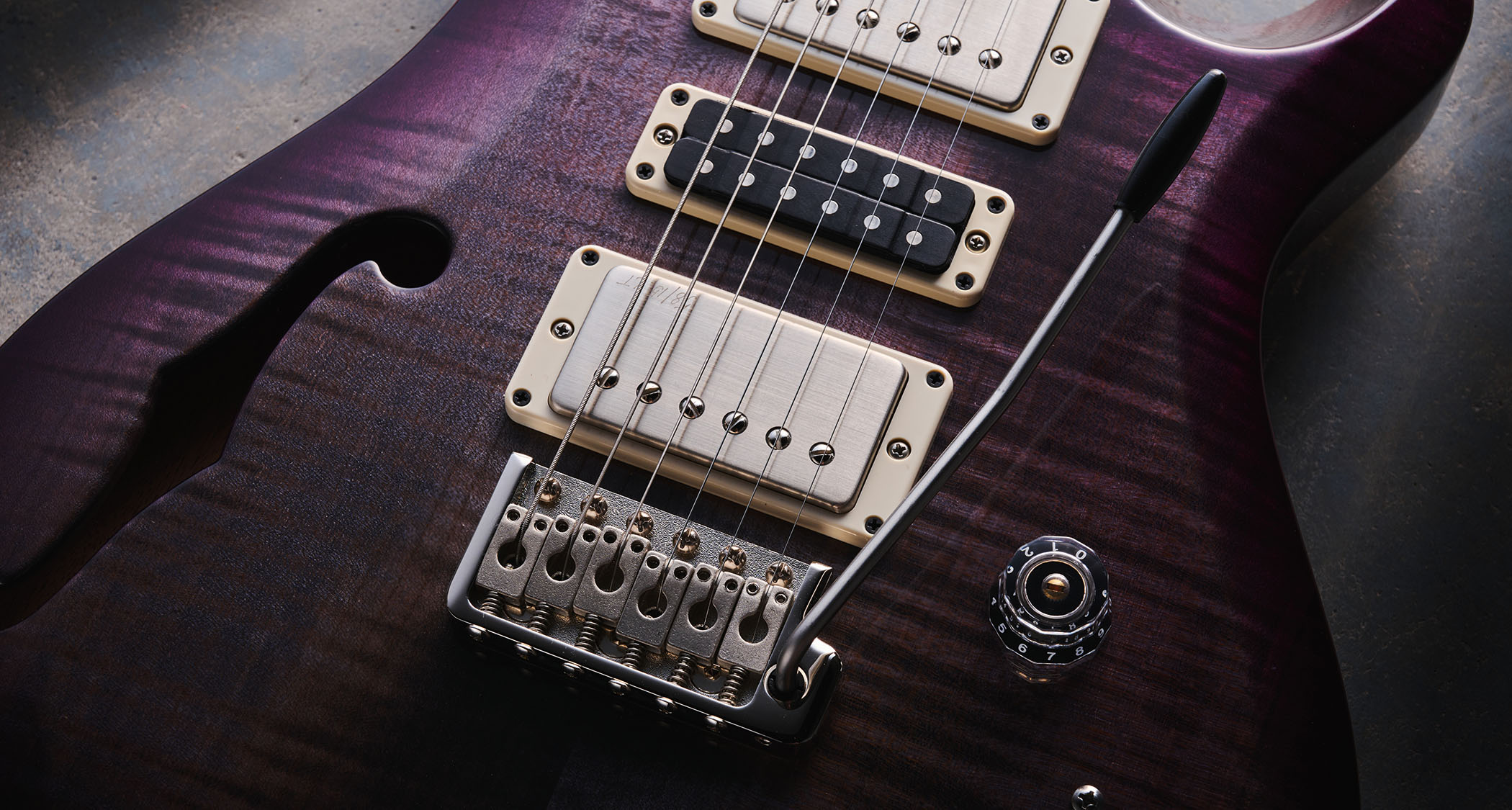
That trio of sounds – especially the clear voicing with the volume pulled back – would get you through a huge range of styles, but pull those mini-switches up towards you and these positions don’t sound like afterthoughts as the character shifts to a much more Fender-y clarity with bite and a detailed high-end that is clear but not oversharp, typical for post-TCI PRS.
The SE doesn’t have quite the clarity of the S2 or perhaps the refinement, but that slightly thicker voicing does add a bit of ‘dirt’, and running in the split-coil modes perfectly captures the two-guitars-in-one vibe
Pulling the volume slightly back rounds the response, too, and we’re certainly not reaching for the tone control as we kick in a level boost for a bit more hair.
Tracking the same position, just with the mini-toggles switched, is a great recording trick, creating a perfect texture of thickness and clarity. The neck split certainly heads towards Strat territory with its percussive chop; the neck-and-middle and middle-and-bridge reinforce the illusion, while in the middle position you can play with humbucker/single-coil mixes for more subtle blends.
Perhaps oddly, you can’t voice the Narrowfield on its own, but then again with the expansive voicings as is that might be overkill.
Of course, the S2 and the SE have the same selections but with different pickups – and the S2 doesn’t disgrace itself in the least, the 58/15 LTs displaying a slightly less-refined voice with a little more grit and attack. If you’re working with lower light-crunch gains, this might be home.
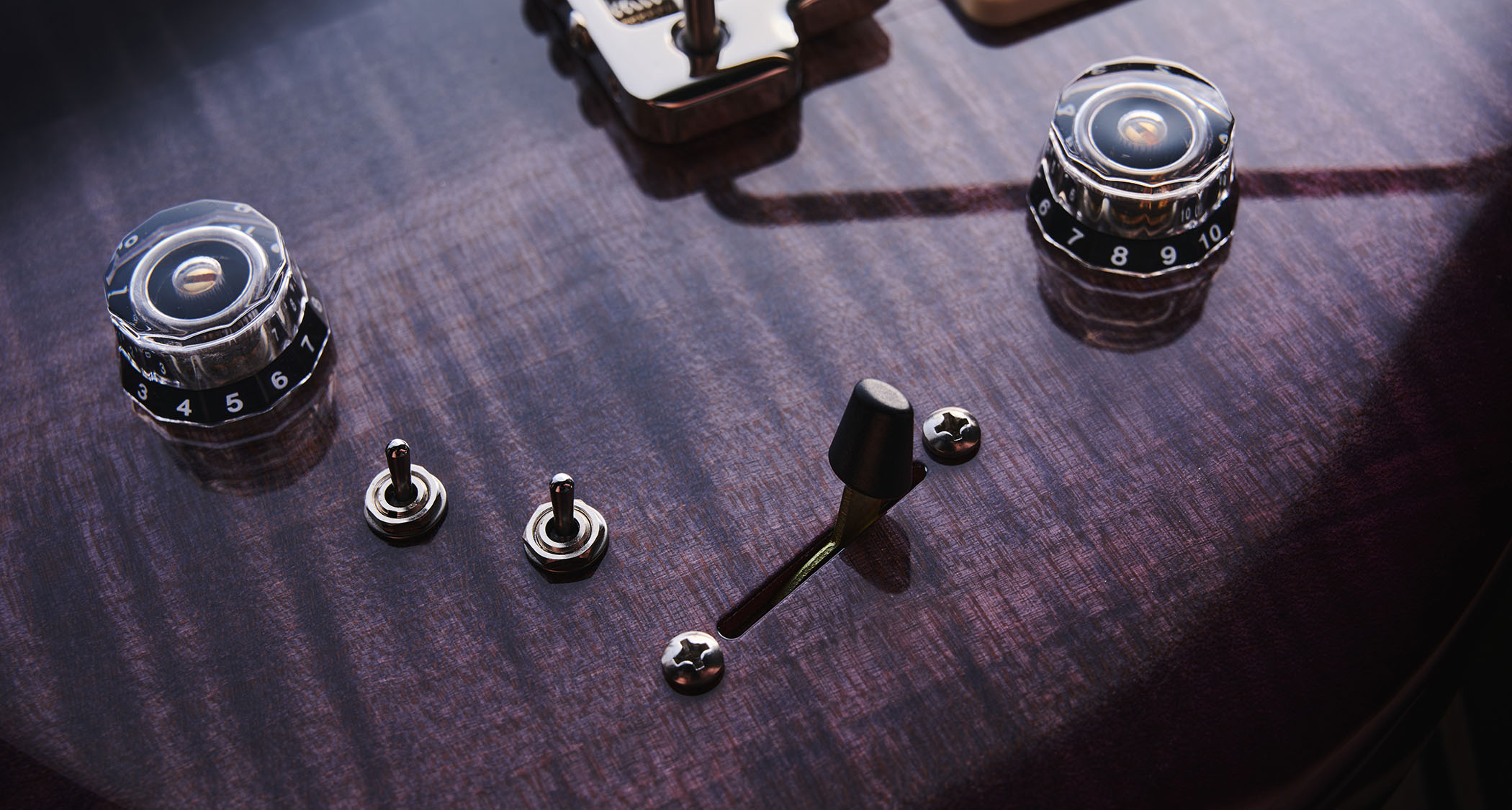
And the SE? It doesn’t have quite the clarity of the S2 or perhaps the refinement, but that slightly thicker voicing does add a bit of ‘dirt’, and running in the split-coil modes perfectly captures the two-guitars-in-one vibe.
PRS’s vibrato needs no introduction and all three here worked effortlessly. It’s worth also mentioning that the overall in-tuneness and tuning stability are typically superb straight out of their gigbags or case.
While that should be expected on guitars that cost as much as the USA models here, it’s not always the case with guitars around the $/£1k mark, which often need a little after-purchase work. Worth bearing in mind.
Verdict
Verdict: ★★★★½

Three guitars with pretty much the same sonic range: which is best? Well, that could lead to quite a discussion. Assuming we all have $/£5k to drop on a new guitar, the Core model is a stunning, detailed build, hugely refined, and very in tune, stable and musical. It’s a top-line PRS and deliciously light in weight.
The SE has a lot to live up to, and while it’s slightly less refined in terms of its sounds and build, we’d take this on a gig any day – it’s a heck of a lot of guitar for the money
The new S2’s streamlined construction produces a more cost-effective guitar that, while far from entry-level, feels a little less precious – in a good way – and it’s the one we spent the most time playing. The neck feels very ‘classic PRS’, not least if you’ve played ’em from day one. And, as big fans of the 58/15 LTs, we can say that its sounds are just as valid.
The SE has a lot to live up to, and while it’s slightly less refined in terms of its sounds and build, we’d take this on a gig any day – it’s a heck of a lot of guitar for the money.
However, the hot-rod modded appearance of the mismatched pickups won’t be to everyone’s taste and, add in those extra switches, not to mention the f-hole and indeed the figured tops, and these are very busy-looking guitars.
And for those of us with more classic tastes, the only Special that has solid colour options is the Core model, which is offered with an opaque Antique White or Black top.
Guitar World verdict: These aren’t the only three-pickup models across the ranges, or the only Semi‑Hollows, but – for 40 years and counting – PRS is still providing a dizzying choice of multi-toned instruments. We doubt these will be the last!
Hands-on videos
Guitarist

PRS Guitars
- Best high-end electric guitars 2025: the finest guitars money can buy
- This article first appeared in Guitarist. Subscribe and save.

Dave Burrluck is one of the world’s most experienced guitar journalists, who started writing back in the '80s for International Musician and Recording World, co-founded The Guitar Magazine and has been the Gear Reviews Editor of Guitarist magazine for the past two decades. Along the way, Dave has been the sole author of The PRS Guitar Book and The Player's Guide to Guitar Maintenance as well as contributing to numerous other books on the electric guitar. Dave is an active gigging and recording musician and still finds time to make, repair and mod guitars, not least for Guitarist’s The Mod Squad.
You must confirm your public display name before commenting
Please logout and then login again, you will then be prompted to enter your display name.
